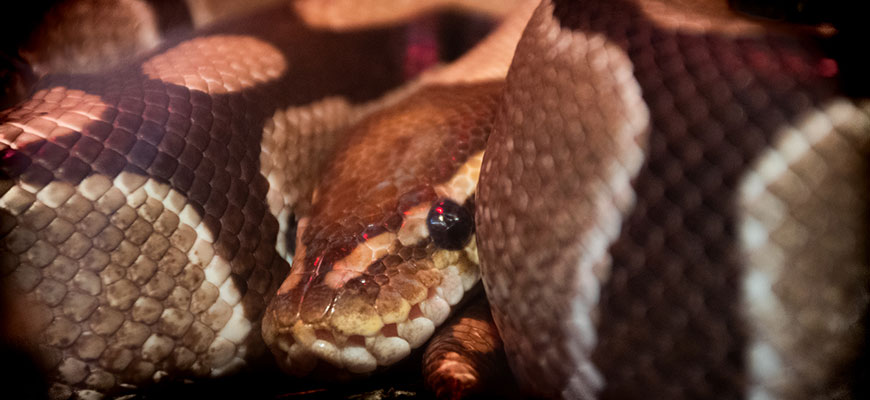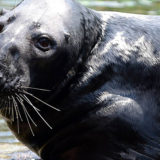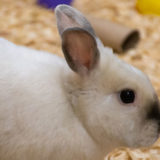RANGE
West Africa. Sierra Leone, Togo, Senegal.
HABITAT
Savannas, sparsely wooded plains, grasslands, termite mounds and mammal burrows.
SIZE
Smallest of the African pythons, it grows up to 6 feet and weighs up to 7 pounds.
LIFE EXPECTANCY
Up to 50 years.
REPRODUCTION
- In males the anal spurs (vestigial legs) on each side of the cloaca are larger than in females. They are used to stimulate the female during mating.
- The female lay up to 12 eggs.
- The eggs stick together, reducing the exposed surface area to prevent them from drying out. The female deposits them in a mammal burrow or other underground retreat and coils around the eggs to protect and incubate them.
- Young snakes hatch out in around 2 months.
DIET
Rodents
BEHAVIOR
- The ball python is a diurnal and semi-arboreal.
- It prefers a temperature of 80 degrees Fahrenheit with a basking site up to 90 degrees.
- The ball python coils into a tight ball when threatened. It protects its head by tucking it in the center of the coils.
- The ball python estimates during the dry season in mammal burrows.
POINTS OF INTEREST
- The ball python is a stocky python, boldly patterned with ovoid yellow blotches on a brown or bluish-brown background.
- Small rectangular openings on the scales of the lips are heat sensitive pits enabling the snake to find warm-blooded prey hiding in concealed sites.
- Wild caught ball pythons do not adjust well to captivity.
STATUS
Common
REFERENCES
Grzimek’s Animal Life Encyclopedia, Vol. 6, Reptiles
Living Snakes of the World, John M. Mehrtens, New York 1987






